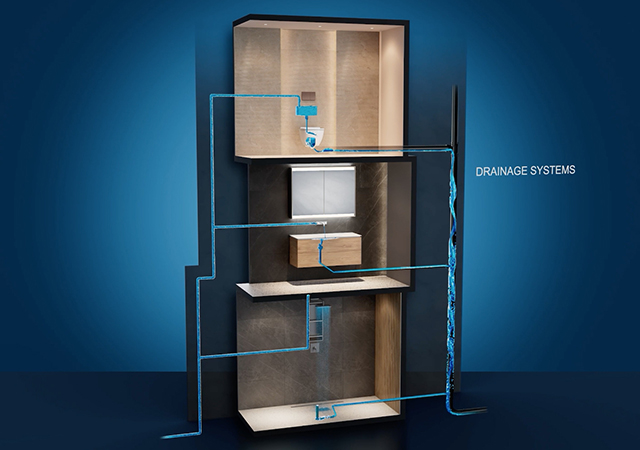
 Jordan ... the process places any dispute on a fixed track for resolution.
Jordan ... the process places any dispute on a fixed track for resolution.
We have noted before that disputes are a mathematical probability in any large construction project. So, it is no surprise that parties try to agree suitable procedures for managing them within the contract rather than going straight to external legal action.
Interesting discussions arise when we try to identify what ‘suitable’ means. Viewpoints might depend on which side of the contract you are on – or which side of a dispute you are on. Parties generally agree that they don’t want every difference between them to go straight into arbitration or litigation. Equally, they (but more so the contractor) don’t want the disputes procedure to make contractual redress more of a lengthy and costly process than it already is.
Most contracts, therefore, include some sort of escalation procedure whereby a dispute or difference can be (or must be) aired in another setting (maybe discussed among senior executives or taken to mediation or adjudication) before it is taken into arbitration or litigation.
We got a reminder recently of the risks in getting this wrong: A contractor Kajima Construction Europe (UK) Ltd (Kajima) was engaged by a developer Children’s Ark Partnerships Ltd (CAPL) to design and construct a hospital. The contractual dispute resolution provisions included steps for the escalation of any dispute, as conditions precedent for either party to trigger litigation. The disputes schedule stated:
“Subject to paragraph 2 and 6 of this Schedule [fast track claims, injunctions and recovery of liquidated damages – none of which was relevant], all Disputes shall first be referred to the Liaison Committee for resolution. Any decision of the Liaison Committee shall be final and binding unless the parties otherwise agree.”
The contract set out the process for nominating members of the Liaison Committee but, oddly, it didn’t include Kajima personnel: it was to be made up of people from CAPL and their client, a hospital trust. The contract also provided for mediation and adjudication procedures, although neither of these was stated to be mandatory steps.
The parties spent a long time trying to resolve issues concerning alleged fire-stopping defects. Because these discussions threatened to take the matter beyond the limitation period for bringing a court action, the parties agreed a series of “standstill agreements” to effectively stop the clock on limitation. However, they were not able to agree further such agreements and CAPL brought a court action in relation to the alleged defects.
Kajima applied to strike out or to stay that action on the basis that reference to the Liaison Committee was a condition precedent to litigation and CAPL had not met that condition.
The judge agreed that compliance with the disputes resolution procedure was a condition precedent to the issue of court proceedings (even though the contract did not express it as a condition precedent) and agreed that CAPL had not referred the dispute to the Liaison Committee before commencing the court proceedings.
However, the judge rejected Kajima’s application because the contract did not provide sufficient certainty as to the process to be followed by the Liaison Committee in resolving the dispute. There were no prescribed rules for the Liaison Committee to follow, leaving the members to formulate them. There was also no provision as to how a party would refer a dispute to the committee – and the lack of provision for Kajima to be represented on the committee made it doubtful in the judge’s mind that any decision from the committee could be binding on Kajima. The condition precedent was, therefore, unenforceable.
This decision does not disapprove of alternative dispute resolution procedures or question their enforceability per se; it confirms only that they need to be clear in the way the parties are to initiate and engage with that procedure, the selection of people to decide the issue and the process they are to follow in deciding it. In particular: if any part of these steps requires an agreement in order for the process to continue, it is not sufficiently clear.
On that note, it is perhaps useful to consider the disputes process in the Fidic Second Edition main contracts which, I would say, is the ultimate in mandatory tiered dispute resolution. These contracts have a complex definition of “dispute” and tiered provisions for the formal assessment of “matters or claims”: first in a determination, then by a Dispute Avoidance/Adjudication Board (DAAB) and ultimately in arbitration, provided that the previous steps have been followed. At each stage, a party not wishing to accept the given assessment needs to follow a time-limited process to escalate it to the next stage.
The issue is not that the process is unclear, but that it places any dispute on a fixed track for resolution, rather than allowing it to be put aside to be dealt with at the final account bun fight. This is good “disputes hygiene” but the common complaint is that the process is too complicated and lengthy, before a party can even reach the start line in an arbitration. Parties sometimes prefer the bun fight.
* Stuart Jordan is a partner in the Global Projects group of Baker Botts, a leading international law firm. Jordan’s practice focuses on the oil, gas, power, transport, petrochemical, nuclear and construction industries. He has extensive experience in the Middle East, Russia and the UK.
















.jpg)




















































.jpg)




.jpg)





